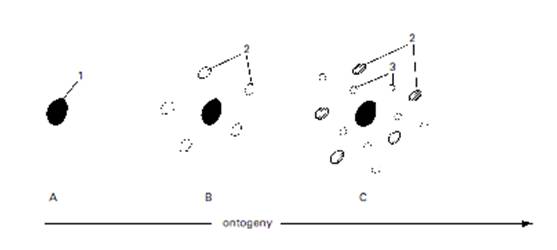Mechanism
Mechanism
Mechanism looks at the functional realtions between cause and effect of a behavior. Within the scope of physiology, scientists look at the hormonal, neuronal, molecular, social, and environmental conditions' effects on behavior.
Mechanism Development in Cephalopods
One of the mechanisms involved in mimicry is dependent upon chromatophores, neuromuscular organs responsible for cephalopod coloration. Studies of the development of these organs has shown that their development is strongly determined by the nature of the cephalopod’s lifestyle. For example, in bottom-dwelling cuttlefish, chromatophores are ten times more dense in hatchlings than in adults, as the juveniles depend on complex body patterns for camouflage. By contrast, chromatophores are sparse in epipelagic cephalopods, as these species depend on transparency for concealment in open water.
Cephalopod chromatophores undergo a consistent pattern of development in post-embryonic life. Older chromatophores never disappear, maintaining their positions throughout the organism’s lifetime. New chromatophores develop in the spaces between older ones. These new organs are yellow, and darken with age to become orange, red and then brown. New chromatophores are smaller than older ones, and remain smaller throughout life. [8]